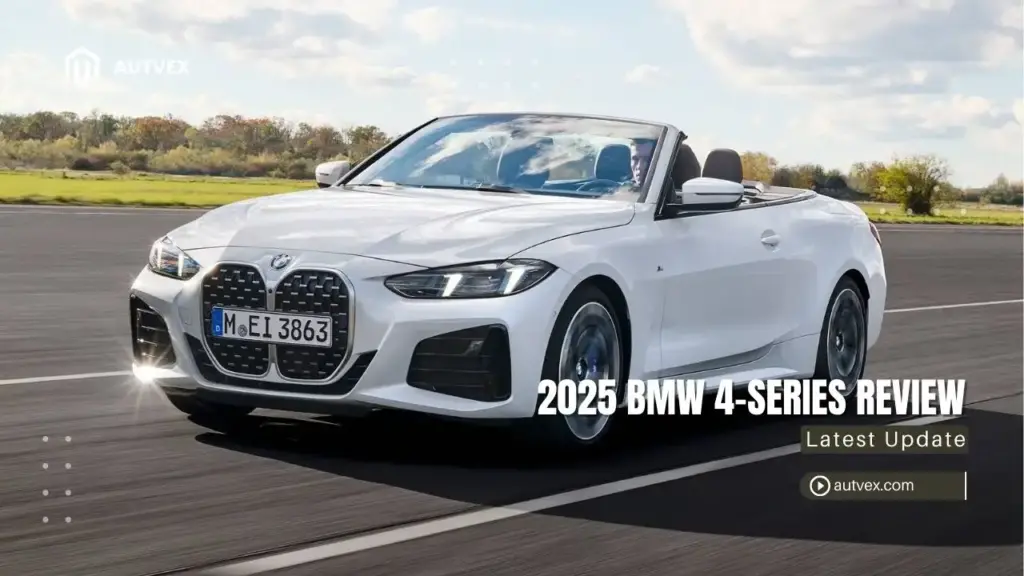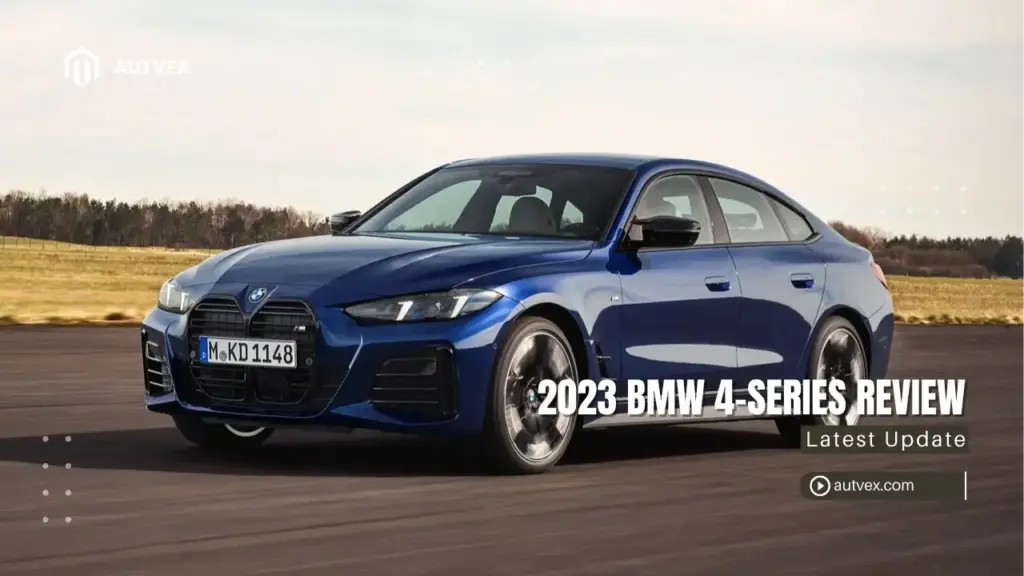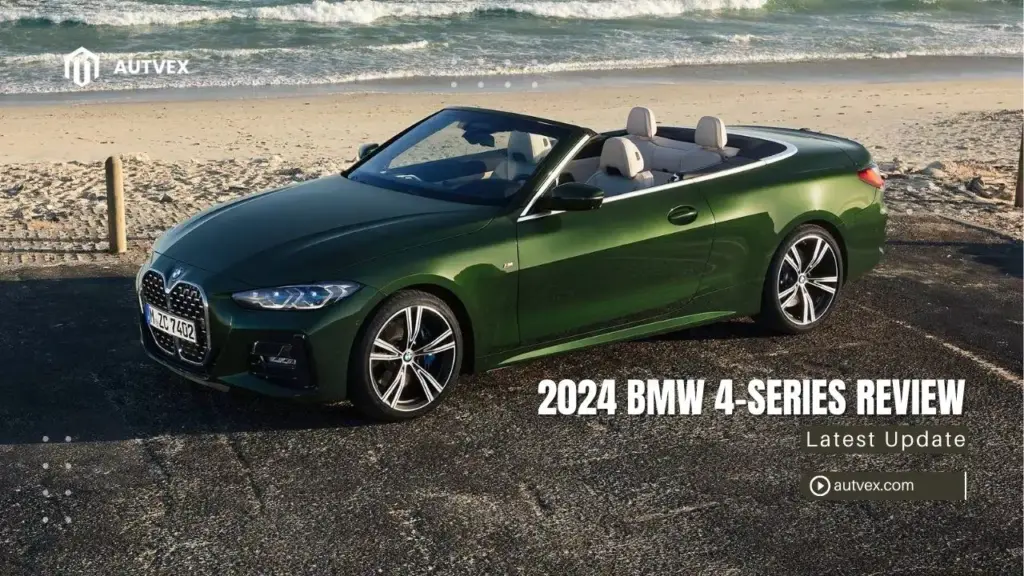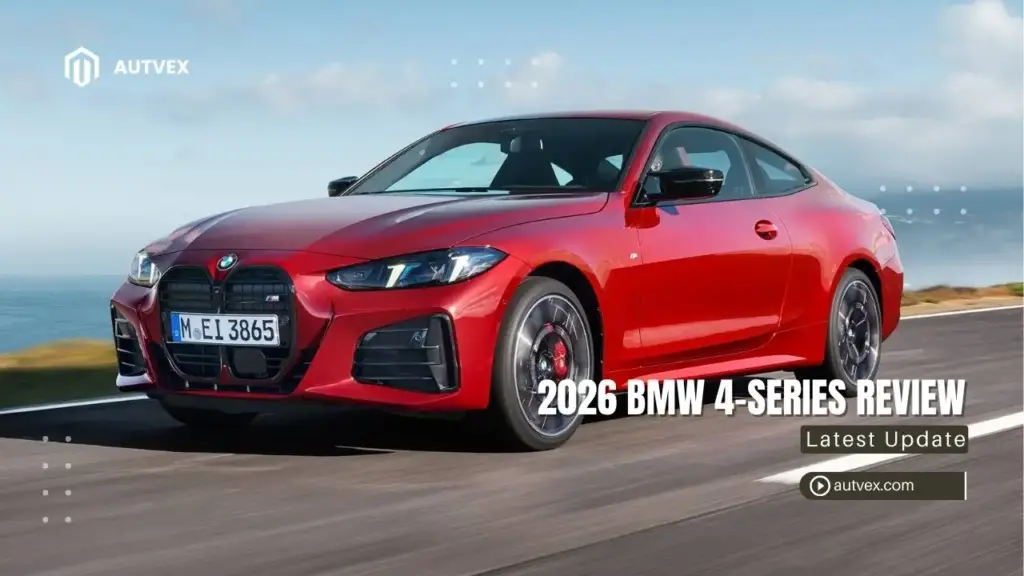You may also like:
The 2025 BMW 4-Series is worth buying for luxury coupe enthusiasts seeking refined performance and updated technology, starting at $52,325 for the 430i and $66,250 for the M440i[1]. Key updates include 48-volt mild hybrid systems across both engines, redesigned LED headlights, laser fiber optic taillights, and the enhanced iDrive 8.5 infotainment system[2]. The M440i’s 386-horsepower inline-six delivers 0-60 mph acceleration in 4.2 seconds with xDrive, while the 430i’s 255-horsepower four-cylinder achieves an impressive 31 mpg combined rating[1]. Consumer Reports predicts average reliability for the model year, and the vehicle maintains strong positioning against competitors like the Audi A5 and Genesis G70[3].
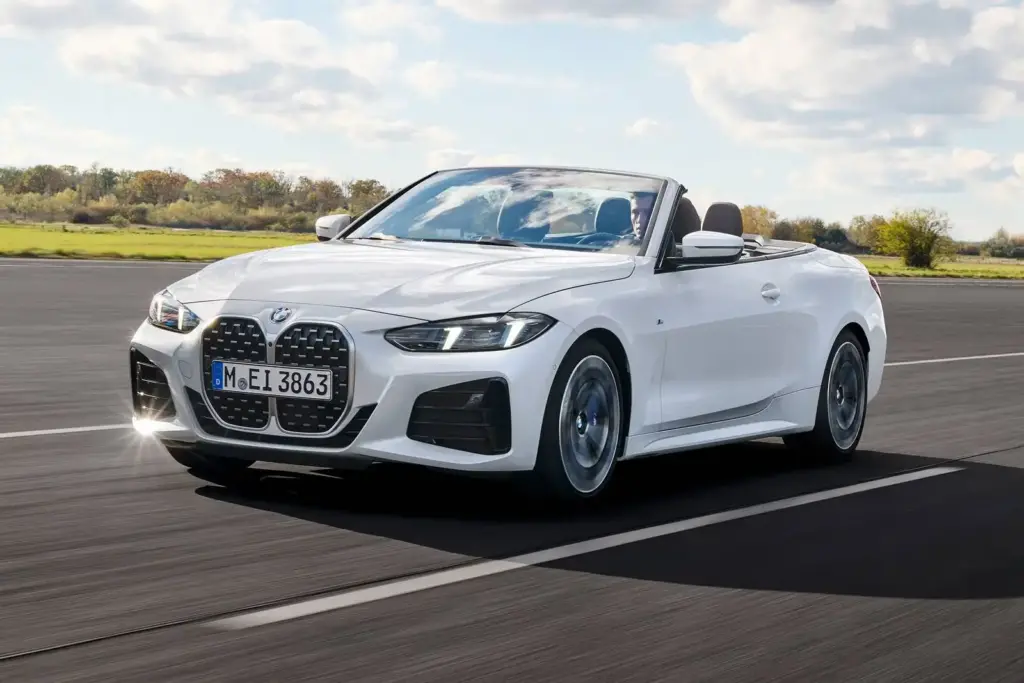
2025 BMW 4-Series Overview & What’s New
Key Updates from Previous Model Year
The 2025 model year represents a significant technological evolution for the BMW 4-Series lineup[1]. BMW has equipped both available engines with 48-volt mild hybrid systems, providing enhanced efficiency and low-speed torque assistance.
The exterior receives noteworthy updates with redesigned headlights featuring new LED technology and a revised front fascia including matte chrome kidney grille surrounds[2]. M440i models showcase BMW’s innovative laser taillight technology utilizing illuminated glass fiber bundles for distinctive nighttime visibility.
Major 2025 Updates:
- 48-volt mild hybrid system integration across 430i and M440i engines
- Redesigned LED headlights with updated styling and functionality
- Laser fiber optic taillights on M440i and Shadowline package models
- BMW iDrive 8.5 operating system with streamlined functionality
- New paint colors: Cape York Green metallic and Vegas Red metallic
- Enhanced steering wheel design with updated controls
- Miller cycle combustion on 430i 2.0-liter engine for improved efficiency[1]
Model Lineup & Body Style Options
The 2025 BMW 4-Series maintains its three-variant approach, each targeting distinct luxury buyer preferences and lifestyle needs[2]. Understanding the pricing structure helps buyers identify the optimal configuration for their budget and requirements.
| Body Style | 430i RWD | 430i xDrive | M440i RWD | M440i xDrive |
|---|---|---|---|---|
| Coupe | $52,325 | $54,325 | $66,250 | $68,250 |
| Convertible | $60,325 | $62,325 | $74,250 | $76,250 |
| Gran Coupe | $54,925 | $56,925 | $69,850 | $71,850 |
The xDrive all-wheel drive system adds a consistent $2,000 premium across all configurations, providing enhanced traction for varying weather conditions common in American markets[1].
Target Market & Buyer Profile
The 2025 BMW 4-Series appeals to discerning luxury buyers prioritizing style, performance, and technology over maximum practicality. This demographic includes affluent professionals aged 35-55 seeking a distinctive daily driver that delivers weekend excitement.
Ideal Buyer Characteristics:
- Annual income: $75,000+ for comfortable ownership
- Lifestyle: Urban/suburban professionals with style consciousness
- Priorities: Performance driving dynamics and premium technology
- Usage patterns: Daily commuting with spirited weekend driving
- Household composition: Singles, couples, or empty nesters
The 4-Series competes directly with the Audi A5 Sportback and Genesis G70, positioning itself as a premium alternative that emphasizes BMW’s renowned driving dynamics and brand prestige.
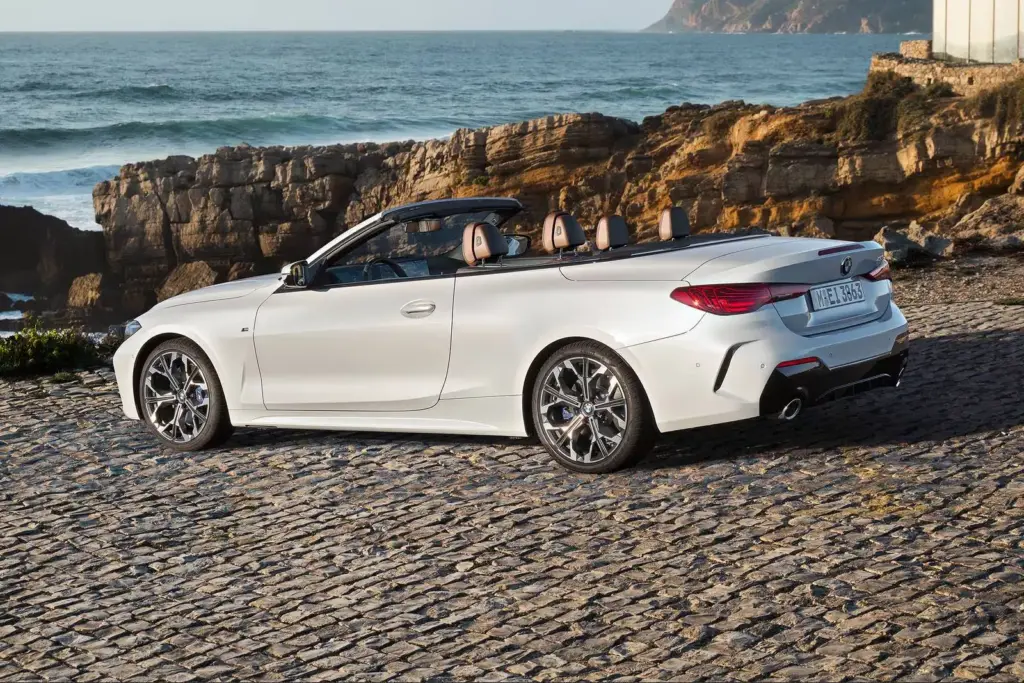
2025 BMW 4-Series Engine & Performance Specs
430i 2.0L Turbo Four-Cylinder Engine
The base 430i engine receives comprehensive updates for 2025, incorporating Miller cycle combustion technology and 48-volt mild hybrid assistance[1]. These enhancements deliver improved efficiency without sacrificing the responsive character BMW enthusiasts expect.
430i Engine Specifications:
- Displacement: 2.0-liter turbocharged four-cylinder
- Power output: 255 horsepower @ 5,000-6,500 RPM
- Torque: 295 lb-ft @ 1,550-4,400 RPM
- Hybrid system: 48-volt mild hybrid with 11 hp boost
- Fuel economy: Up to 31 mpg combined, 36 mpg highway[1]
- 0-60 mph (RWD): 5.6 seconds
- 0-60 mph (xDrive): 5.4 seconds
The Miller cycle combustion system optimizes the compression ratio for improved thermal efficiency, while the 48-volt mild hybrid provides additional torque during acceleration and enables engine-off coasting for fuel savings.
M440i 3.0L Turbo Inline-Six Engine
The M440i showcases BMW’s acclaimed turbocharged inline-six engine, enhanced with 48-volt mild hybrid technology for 2025[1]. This powerplant represents the performance pinnacle of the standard 4-Series lineup, delivering smooth power delivery and distinctive acoustic character.
| Specification | M440i RWD | M440i xDrive |
|---|---|---|
| Power output | 386 horsepower | 386 horsepower |
| Torque | 398 lb-ft | 398 lb-ft |
| 0-60 mph | 4.6 seconds | 4.2 seconds[1] |
| Fuel economy | 30 mpg combined | 28 mpg combined |
| Premium fuel | Required (91+ octane) | Required (91+ octane) |
| Top speed | 155 mph (limited) | 155 mph (limited) |
The inline-six engine features BMW’s latest TwinPower turbocharging technology, direct injection, and continuously variable valve timing for optimal performance across the rev range.
Transmission & Drivetrain Systems
Both engine options pair exclusively with BMW’s refined 8-speed automatic transmission, providing smooth shifts and optimal gear ratios for performance and efficiency[2]. The transmission adapts to driving style and selected driving modes for personalized response characteristics.
Drivetrain Features:
- Standard transmission: 8-speed automatic with paddle shifters
- Driving modes: Eco Pro, Comfort, Sport, Sport+ settings
- xDrive AWD: Intelligent all-wheel drive with rear bias
- Launch control: Standard on M440i models for optimal acceleration
- Electronic differential: Rear differential upgrade on M440i
- Suspension options: Standard or M Sport adaptive dampers
The M Sport suspension, standard on M440i models, provides firmer damping and enhanced body control while maintaining reasonable ride comfort for daily use.
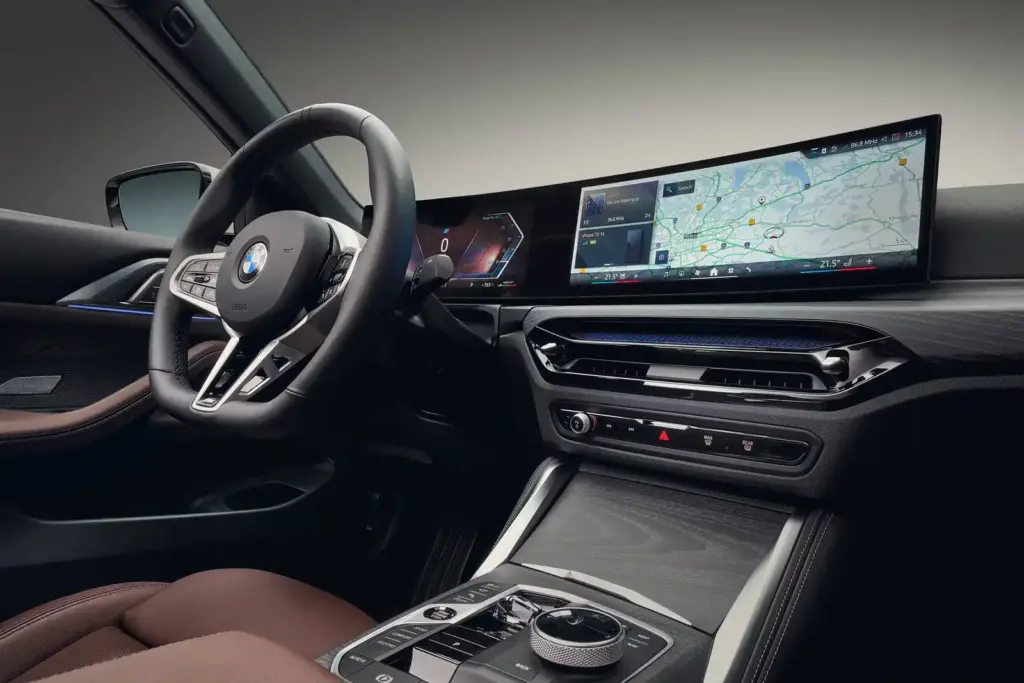
2025 BMW 4-Series Interior Features & Technology
Cabin Design & Space Analysis
The 2025 4-Series interior design closely follows the successful 2025 BMW 3-Series layout, though the coupe’s lower roofline creates a more intimate cabin atmosphere[1]. Front passengers enjoy generous space and supportive seating, while rear accommodations reflect the coupe’s style-focused priorities.
Interior Space Specifications:
- Front headroom: 38.4 inches (adequate for most drivers)
- Front legroom: 42.0 inches (generous accommodation)
- Rear headroom: 36.1 inches (limited by coupe roofline)
- Rear legroom: 33.4 inches (tight for adults)
- Cargo capacity: 11-12 cubic feet depending on body style[2]
Premium materials include standard SensaTec synthetic leather upholstery, ambient lighting, and dual-zone automatic climate control. M440i models upgrade to faux-leather dashboard wrapping and enhanced trim pieces for elevated luxury appeal.
BMW iDrive 8.5 Infotainment System
The centerpiece of the 2025 technology upgrade is BMW’s iDrive 8.5 operating system, designed to address previous complexity issues while enhancing functionality[1]. The system centers around BMW’s curved display concept with integrated screens for instrument and infotainment functions.
| Technology Component | Standard Features | Premium Upgrades |
|---|---|---|
| Main display | 14.9-inch touchscreen | Enhanced graphics processing |
| Instrument cluster | 12.3-inch digital display | Configurable layouts |
| Connectivity | Wireless Apple CarPlay/Android Auto | BMW ConnectedDrive services |
| Voice control | BMW Intelligent Personal Assistant | Natural language processing |
| Audio system | 10-speaker setup | 16-speaker Harman Kardon upgrade |
| Navigation | Live traffic and routing | Predictive destination suggestions |
The streamlined interface reduces menu complexity while providing comprehensive vehicle control and connectivity features that modern luxury buyers expect[2].
Comfort & Convenience Technology
The 2025 model enhances comfort features with refined climate control, wireless charging, and comprehensive connectivity options[1]. Standard equipment includes heated power front seats, though the climate system’s automatic function requires refinement based on professional reviews.
Convenience Features:
- Wireless smartphone charging with compatible devices
- USB-A and USB-C connectivity ports throughout cabin
- Tri-zone climate control in convertible models
- Remote engine start available with ConnectedDrive
- Digital key smartphone-based vehicle access
- Over-the-air updates for software enhancements
Advanced comfort options include ventilated seats, heated steering wheel, and premium leather upholstery for buyers seeking maximum luxury amenities.
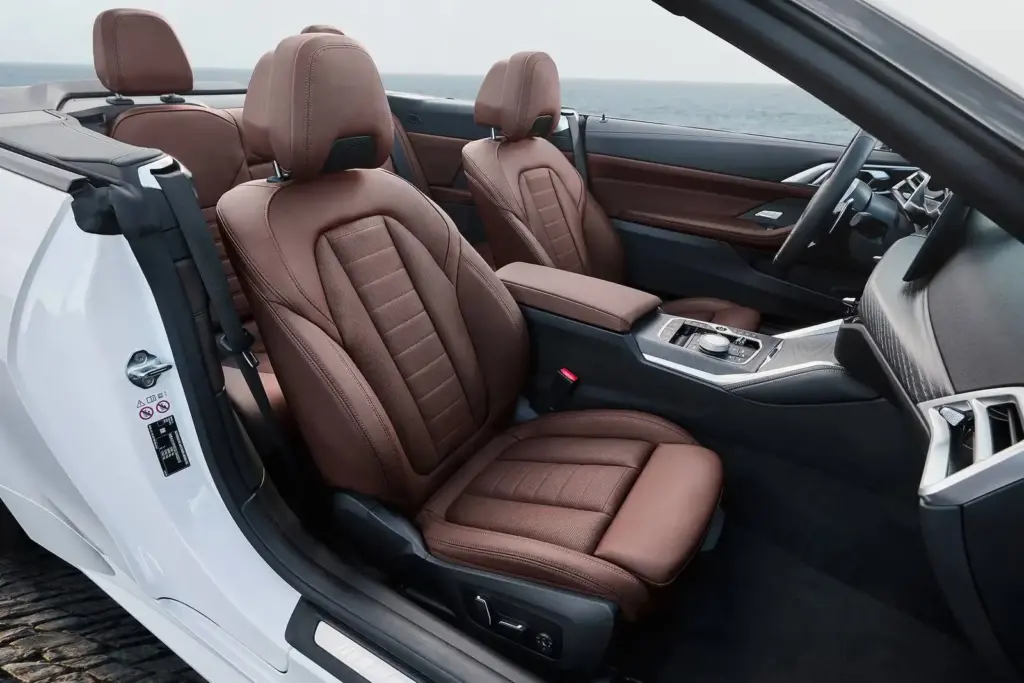
Exterior Style & Design Elements
2025 BMW 4-Series Styling Updates
The 2025 model year brings thoughtful exterior refinements while maintaining the controversial yet distinctive kidney grille design that defines the current generation[1]. BMW’s design team has focused on lighting technology and aerodynamic enhancements to modernize the appearance.
The redesigned front fascia features new headlamp geometry with advanced LED technology and updated daytime running light signatures[2]. The kidney grilles receive matte chrome surrounds that provide a more sophisticated appearance compared to previous high-gloss treatments.
Key Styling Elements:
- Prominent kidney grille maintaining brand identity
- Revised headlight design with new LED technology
- Aerodynamic body sculpting for efficiency and visual appeal
- Character lines extending from hood to rear quarter panels
- Coupe proportions with long hood and short deck design
- Active grille shutters improving aerodynamic efficiency
Available Color Options & Customization
BMW expands the 2025 4-Series color palette with two distinctive new metallic finishes designed to appeal to American luxury buyers[1]. The expanded selection allows personalization while maintaining strong resale value considerations.
| Color Category | Options Available | Additional Cost |
|---|---|---|
| Standard colors | Alpine White (no charge) | $0 |
| Metallic paints | 10 options including new Cape York Green | $595 |
| BMW Individual | Premium colors and custom options | $1,950-$4,200 |
| New for 2025 | Cape York Green metallic, Vegas Red metallic | $595 each |
Popular choices among American buyers include Storm Bay metallic, Mineral Grey metallic, and the no-cost Alpine White, which consistently maintains strong resale values across regional markets.
M Sport Package & Appearance Upgrades
The M Sport Package transforms the 4-Series aesthetic with aggressive styling components that enhance the vehicle’s performance-oriented character[1]. This package comes standard on M440i models and is available as an option on 430i variants.
M Sport Package Components:
- 19-inch Y-spoke alloy wheels in Jet Black or bi-color finish
- M Sport body kit with enhanced front and rear bumpers
- Side skirts with M-specific design elements
- Rear spoiler integrated into trunk lid design
- M Sport suspension with adaptive dampers
- Performance tires optimized for handling capability
Additional customization includes an exterior carbon accent package featuring mirror caps, rear spoiler, and interior trim pieces, adding $1,200-$2,500 depending on selected components[2].
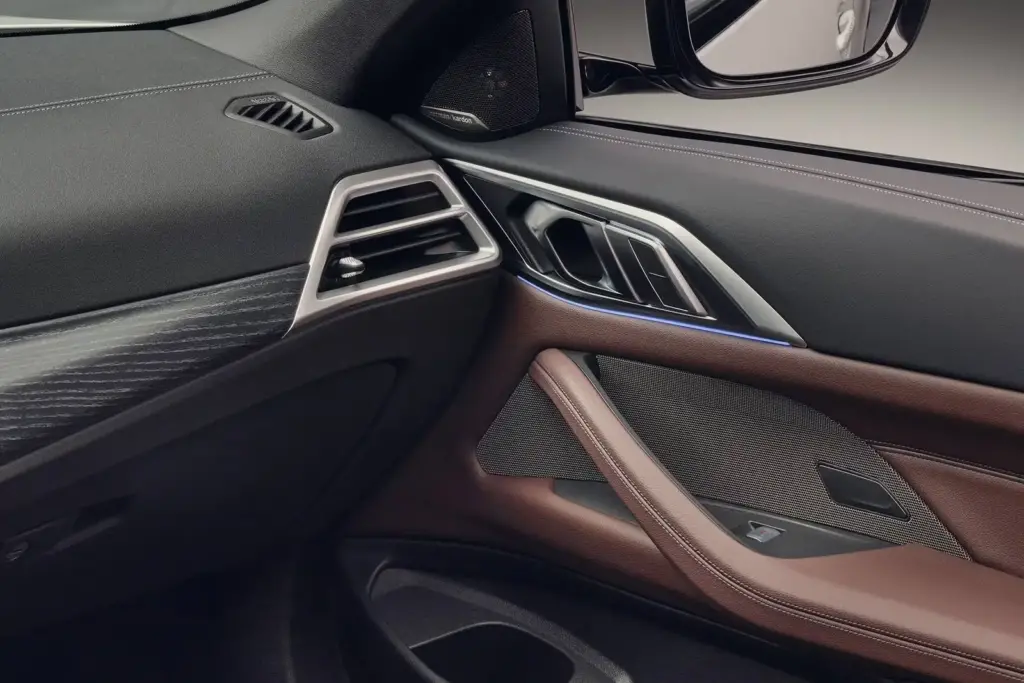
2025 BMW 4-Series Pricing & Value Analysis
Starting MSRP by Trim & Body Style
The 2025 BMW 4-Series pricing structure positions it competitively within the luxury coupe segment while reflecting the substantial technology and powertrain updates[1]. Understanding the pricing hierarchy helps buyers identify optimal value propositions.
| Configuration | Base Price | Popular Options | Fully Loaded |
|---|---|---|---|
| 430i Coupe RWD | $52,325 | $57,000-$62,000 | $68,000+ |
| 430i Convertible RWD | $60,325 | $65,000-$70,000 | $76,000+ |
| M440i Coupe RWD | $66,250 | $72,000-$78,000 | $85,000+ |
| M440i Convertible RWD | $74,250 | $80,000-$86,000 | $93,000+ |
All pricing includes destination charges but excludes taxes, registration fees, and dealer-installed accessories[4]. The xDrive all-wheel drive system adds $2,000 across all configurations.
Popular Options & Package Pricing
BMW’s options strategy allows extensive customization, though costs accumulate rapidly beyond base pricing[1]. The most popular packages among American buyers provide meaningful feature upgrades at competitive prices compared to individual option selection.
Popular Package Pricing:
- M Sport Package (430i only): $3,600 – includes 19-inch wheels, body kit, suspension
- Premium Package: $2,200 – heated steering wheel, premium audio, comfort access
- Technology Package: $1,900 – head-up display, parking assistance, wireless charging
- Driver Assistance Package: $1,700 – adaptive cruise, lane change assist
- Individual options: Harman Kardon audio ($875), sunroof ($1,200 coupe only)
Total cost of ownership considerations include premium fuel requirements, maintenance costs averaging $1,200-$1,500 annually, and insurance premiums typically 15-20% higher than mainstream luxury vehicles[3].
Lease vs Purchase Analysis
Current BMW Financial Services programs offer competitive lease and purchase financing, with terms varying based on credit qualification and regional incentives[4]. The decision between leasing and purchasing depends on individual financial circumstances and anticipated usage patterns.
Lease Considerations:
- Typical terms: 36 months with 10,000-12,000 annual miles
- Money factor: 0.00179-0.00199 (equivalent to 4.3-4.8% APR)
- Residual values: 58-62% depending on trim and options
- Current incentives: $1,500-$2,500 lease cash on select models
Purchase Advantages:
- Financing rates: 2.9-5.9% APR based on credit qualification
- No mileage restrictions: Freedom for extensive driving
- Equity building: Asset ownership vs. continuous payments
- Modification flexibility: Personalization options without restrictions
Market analysis suggests the 430i xDrive Coupe with Premium Package offers optimal feature-to-price ratio for most American luxury buyers.
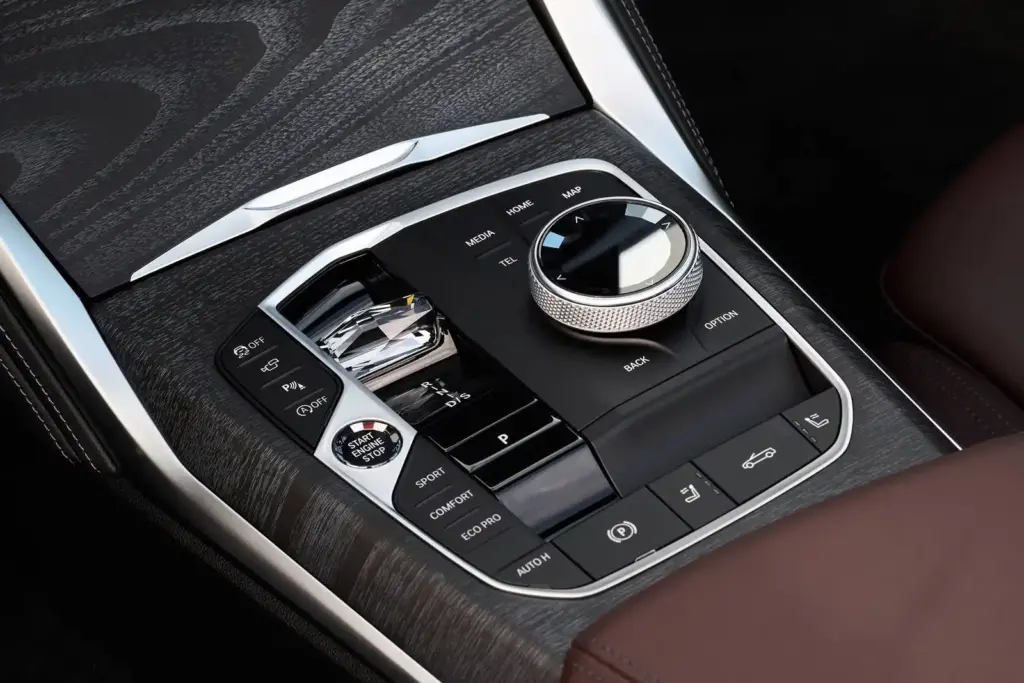
Safety Features & Driver Assistance Technology
Standard Safety Equipment
The 2025 BMW 4-Series includes comprehensive safety systems as standard equipment, reflecting modern safety expectations and regulatory requirements[3]. These features provide both protection and accident avoidance capabilities designed for American driving conditions.
Standard Safety Systems:
- Forward collision warning with pedestrian and cyclist detection
- Automatic emergency braking with city collision mitigation
- Lane departure warning with active lane-keeping assistance
- Blind spot monitoring with rear cross-traffic alert
- Parking sensors front and rear with audio/visual alerts
- Backup camera with trajectory lines and distance markers
The safety suite represents BMW’s commitment to achieving top safety ratings while maintaining the engaging driving experience that defines the brand[1].
Available Advanced Safety Systems
Premium safety features are available through option packages, providing enhanced protection and convenience for daily American driving scenarios[2]. These systems utilize advanced sensors and cameras to monitor the driving environment continuously.
| Advanced Safety Feature | Driver Assistance Package | Functionality |
|---|---|---|
| Adaptive cruise control | Standard inclusion | Stop-and-go traffic capability |
| BMW Parking Assistant Plus | Included | Automated parallel/perpendicular parking |
| Surround-view camera | Standard inclusion | 360-degree overhead view |
| Active lane change assist | Included | Highway lane changing assistance |
| Traffic jam assistant | Standard inclusion | Semi-autonomous low-speed driving |
| Speed limit recognition | Standard across lineup | Camera-based speed sign detection |
These systems work together to provide semi-autonomous driving capabilities in highway and parking situations, though driver attention remains required[3].
Crash Test Ratings & Safety Performance
While specific 2025 model year ratings are pending from NHTSA and IIHS, the BMW 4-Series has historically performed well in safety evaluations[3]. Previous generation models achieved strong overall ratings with particular strength in adult occupant protection.
Expected Safety Performance:
- NHTSA overall rating: 5 stars anticipated based on platform
- IIHS awards: Top Safety Pick qualification likely
- Euro NCAP results: Previous generation earned 97% adult occupant protection
- Real-world performance: Low injury claim rates in insurance data
Consumer Reports predicts average reliability for the 2025 model year based on 2024 model data and BMW brand performance[3]. The prediction reflects BMW’s ongoing improvement in quality control and component reliability. Similar reliability patterns can be observed in related models like the 2024 BMW 2-Series.
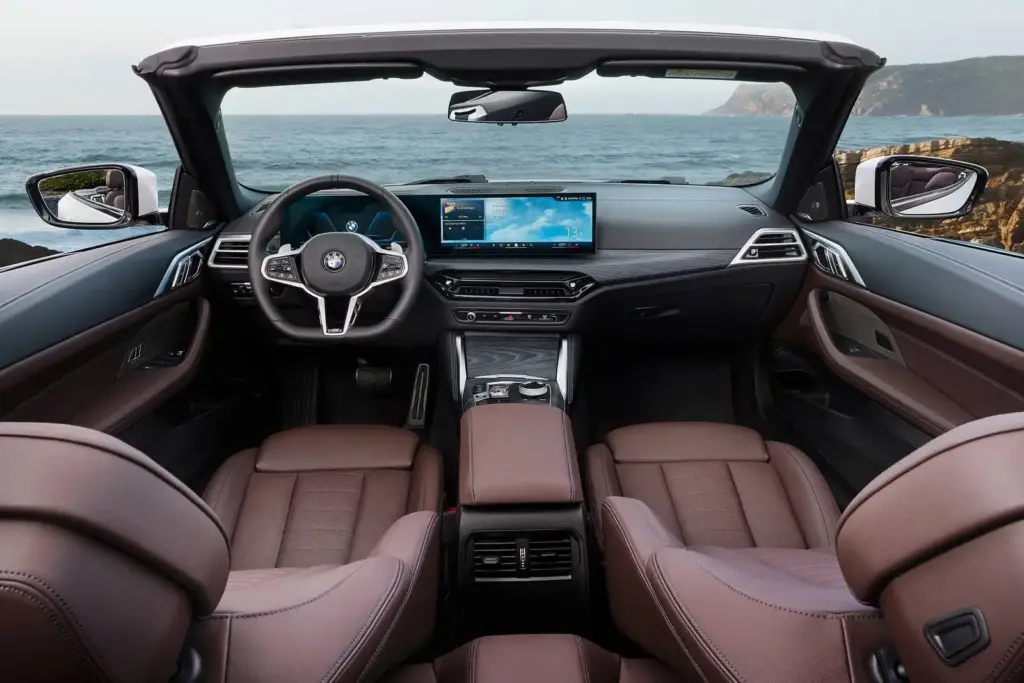
2025 BMW 4-Series vs Key Competitors
vs Audi A5 Sportback Comparison
The Audi A5 represents the 4-Series’ most direct competitor, offering similar luxury credentials and performance capabilities within the premium coupe segment[1]. Both vehicles target affluent buyers seeking style and driving engagement over maximum practicality.
| Comparison Factor | BMW 4-Series M440i | Audi A5 45 TFSI |
|---|---|---|
| Starting price | $66,250 | $64,900 |
| Engine power | 386 HP / 398 lb-ft | 349 HP / 369 lb-ft |
| 0-60 mph | 4.6 seconds (RWD) | 4.9 seconds |
| Fuel economy | 30 mpg combined | 28 mpg combined[5] |
| Cargo space | 12 cubic feet | 13.1 cubic feet |
| Infotainment | 14.9-inch iDrive 8.5 | 12.3-inch MMI |
| Warranty | 4yr/50k miles | 4yr/50k miles |
The BMW offers superior performance and newer infotainment technology, while the Audi provides slightly more cargo space and a more conservative design approach that may appeal to traditional luxury buyers[1].
vs Genesis G70 Coupe Analysis
The Genesis G70 offers compelling value with luxury features and strong performance at a lower price point[5]. However, the brand lacks BMW’s established dealer network and resale value stability in American markets.
Key Differentiators:
- Price advantage: Genesis starts approximately $8,000 lower than comparable BMW
- Warranty coverage: Genesis offers 10yr/100k mile powertrain vs BMW’s 4yr/50k
- Performance parity: Similar acceleration capabilities with turbo six-cylinder engines
- Technology gap: BMW leads in infotainment sophistication and driver assistance
- Brand prestige: BMW maintains stronger luxury positioning and recognition
- Service network: BMW provides superior dealer coverage nationwide
The Genesis G70 achieves 21 mpg city and 29 mpg highway compared to the BMW’s 27 mpg city and 35 mpg highway ratings[5].
vs Mercedes-Benz C-Class Coupe
The Mercedes C-Class Coupe emphasizes luxury comfort over driving dynamics, creating distinct positioning differences from the BMW’s sport-oriented approach[1]. American buyers often cross-shop these models despite their different personalities and target demographics.
Comparison Highlights:
- Interior luxury: Mercedes edges BMW in material richness and cabin refinement
- Driving dynamics: BMW provides more engaging handling and steering feedback
- Technology integration: BMW leads in user interface design and processing speed
- Ride comfort: Mercedes offers superior highway refinement and isolation
- Performance options: Both offer high-performance variants (M4, AMG C63)
- Reliability reputation: BMW and Mercedes show similar long-term dependability patterns
The choice typically reflects personal preference between BMW’s sport-oriented philosophy and Mercedes’ luxury-focused approach to premium coupe design.
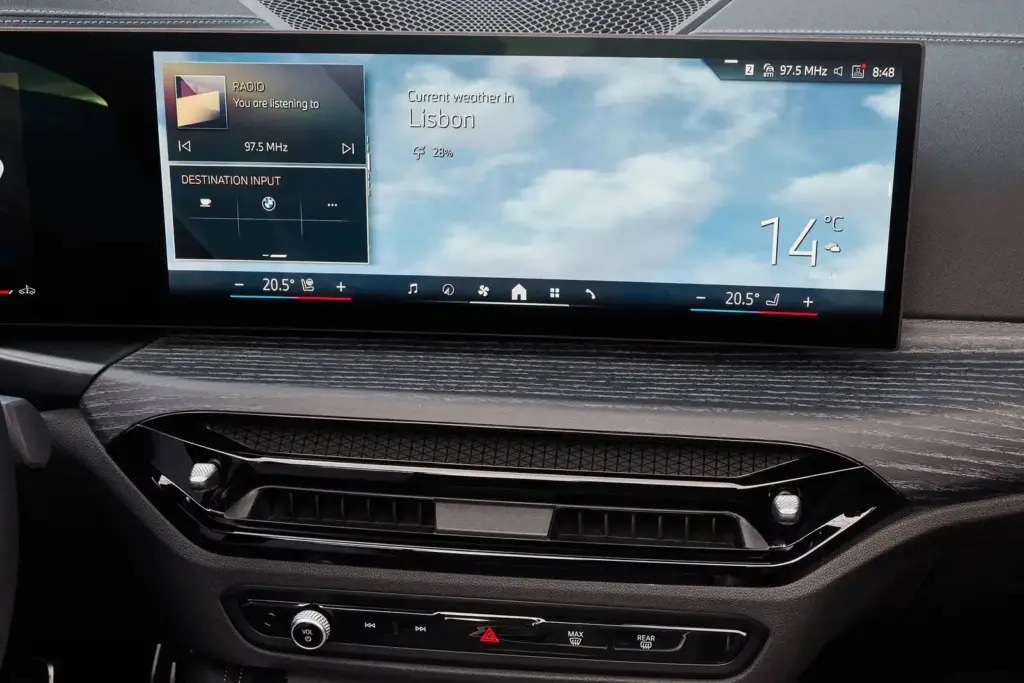
Should You Buy the 2025 BMW 4-Series?
Best Use Cases & Ideal Ownership Scenarios
The 2025 BMW 4-Series excels in specific scenarios that align with its design priorities and capabilities[1]. Understanding these use cases helps potential buyers determine whether the 4-Series matches their lifestyle requirements and expectations.
Optimal Ownership Scenarios:
- Daily commuting: Excellent for highway driving with comfortable seating and refined ride quality
- Weekend spirited driving: Strong performance capabilities for enthusiast driving experiences
- Professional image building: Premium brand presence suitable for business and social settings
- Empty nester lifestyle: Ideal for couples prioritizing style over family hauling capability
- Secondary vehicle role: Perfect as a fun car complementing a practical family SUV or sedan
The vehicle particularly suits buyers who value driving engagement over maximum utility, appreciate cutting-edge technology integration, and want distinctive styling that differentiates from mainstream luxury sedans[2].
Potential Drawbacks & Limitations
Despite its strengths, the 4-Series presents limitations that may affect certain buyer segments[1]. Honest evaluation of these drawbacks ensures informed purchasing decisions that align with realistic expectations.
Key Limitations:
- Rear seat constraints: Limited headroom and legroom restrict adult passenger comfort significantly
- Premium fuel requirements: 91+ octane gasoline increases operating costs by $200-$400 annually
- Maintenance expenses: BMW service costs exceed mainstream luxury brands by 30-40%
- Controversial styling: Polarizing kidney grille design may affect long-term satisfaction
- Cargo space: Trunk capacity trails SUV alternatives and some sedan competitors
- Visibility challenges: Flat hood design complicates front-end placement during parking[6]
Annual Ownership Costs:
- Scheduled maintenance: $1,200-$1,800 depending on mileage and service location
- Insurance premiums: 15-20% higher than non-luxury vehicles in similar categories
- Depreciation: 35-40% value loss over first three years based on historical data
- Premium fuel: Additional $200-$400 annually vs. regular gasoline requirements
Buying Timeline & Market Availability
Current dealer inventory levels vary across American markets, with popular configurations experiencing moderate wait times[4]. Understanding market conditions and timing helps buyers optimize their purchase experience and negotiate favorable terms.
Market Conditions (Q3 2025):
- Dealer inventory: Generally adequate for most standard configurations
- Custom order wait: 8-14 weeks for factory orders with specific options
- Popular combinations: M440i xDrive with M Sport Package shows highest demand
- Incentive timing: Strongest lease and purchase incentives typically appear Q4
Model year transition considerations suggest the 2026 BMW 4-Series will bring minimal changes, making the 2025 model a stable choice without concerns about immediate obsolescence. This pattern mirrors the evolution seen with models like the 2025 BMW 2-Series, where BMW maintains consistency within generation cycles.
The 2027 model year refresh timeline indicates this generation will continue through 2028, providing confidence in parts availability and service support for current buyers[1].
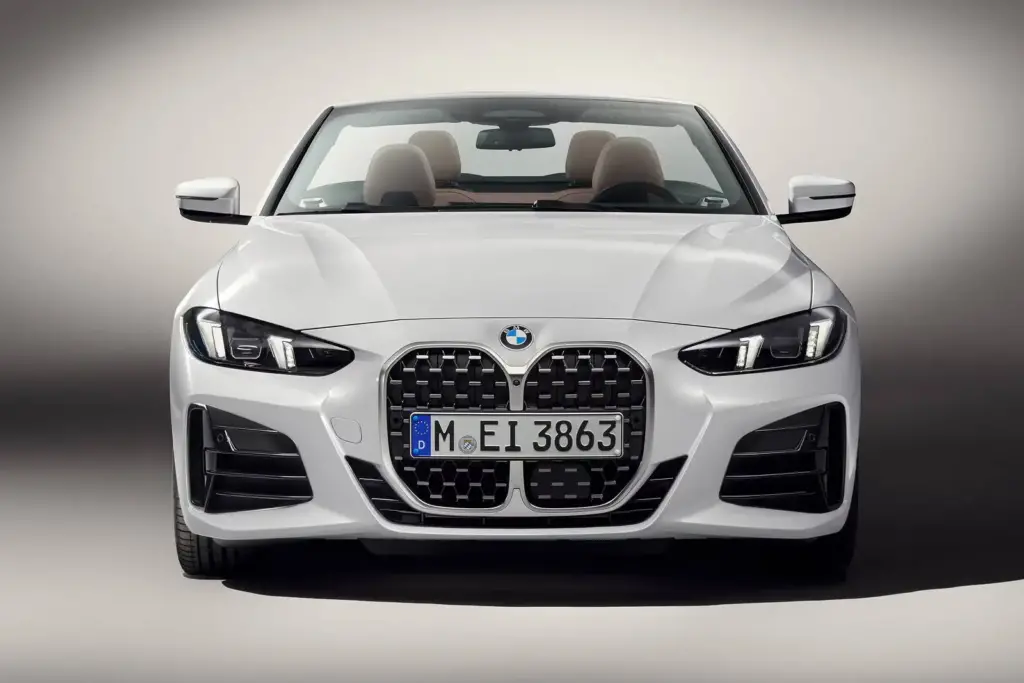
Key Takeaways
- The M440i offers exceptional performance value with 386 horsepower, 4.2-second 0-60 mph capability, and impressive 30 mpg combined fuel economy for a turbocharged six-cylinder engine
- Technology upgrades make 2025 the ideal buying year with iDrive 8.5 addressing previous complexity issues and 48-volt mild hybrid systems improving efficiency across the lineup
- Pricing remains competitive against German rivals though total ownership costs run higher due to premium fuel requirements and BMW’s maintenance pricing structure
- The controversial grille design continues to divide buyers, making extended test drives essential to ensure long-term aesthetic satisfaction with the distinctive styling approach
- Rear seat limitations restrict family utility, making the 4-Series best suited for couples, singles, or buyers seeking a dedicated performance-oriented second vehicle
- Strong dealer network and resale values provide ownership advantages over emerging luxury brands, though warranty coverage falls short of Genesis’s comprehensive protection
- Current market conditions favor buyers with reasonable inventory availability and competitive financing rates through BMW Financial Services
FAQs
What’s new in the 2025 BMW 4-Series?
The 2025 model features 48-volt mild hybrid systems on both engines, redesigned LED headlights, laser fiber optic taillights on M440i models, BMW iDrive 8.5 infotainment system, and two new paint colors (Cape York Green and Vegas Red metallic)[1]. The 430i engine receives Miller cycle combustion for improved efficiency, while the M440i gets enhanced hybrid integration[2].
How reliable is the 2025 BMW 4-Series?
Consumer Reports predicts average reliability for the 2025 4-Series based on 2024 model data and BMW brand performance[3]. RepairPal gives BMW a reliability rating of 2.5 out of 5, ranking it 53rd out of 68 luxury midsize cars. The 2025 model has been recalled once by NHTSA, though specific details vary by affected units[3].
What’s the difference between 430i and M440i models?
The 430i uses a 255-horsepower 2.0-liter turbocharged four-cylinder achieving 31 mpg combined, while the M440i features a 386-horsepower 3.0-liter turbocharged inline-six with 30 mpg combined[1]. The M440i includes standard 19-inch wheels, M Sport suspension, rear differential, rear spoiler, and premium interior materials, justifying its $13,925 price premium over the base 430i[1].
Is the BMW 4-Series worth the premium over competitors?
The 4-Series justifies its premium through superior performance (386 HP vs Genesis G70’s 365 HP), newer technology (iDrive 8.5 vs older systems), better fuel economy (30 mpg vs Genesis’s 25 mpg combined), and stronger resale values[5]. However, Genesis offers significantly better warranty coverage (10yr/100k vs 4yr/50k miles) and lower starting prices by approximately $8,000[5].
How does the 4-Series compare to the 3-Series sedan?
The 4-Series shares the 3-Series platform but sacrifices rear seat space and cargo capacity for coupe styling and lower roofline[1]. Both offer identical powertrains and technology features, though the 4-Series commands a $3,000-$5,000 premium over equivalent 3-Series configurations. The 3-Series provides better practicality for families, as detailed in Autvex‘s comprehensive BMW comparison guides.
What are common problems with BMW 4-Series models?
Historical BMW 4-Series issues include timing chain problems on early models (2014-2015), fuel pump recalls affecting multiple model years, and infotainment software glitches[3]. Current generation models (2021+) show improved reliability, though some owners report intermittent sensor malfunctions and wireless connectivity issues. Most problems are addressed under warranty through software updates or component replacement[3].
Should I choose RWD or xDrive AWD?
The $2,000 xDrive upgrade provides enhanced traction and stability, particularly valuable in northern climates or for buyers prioritizing year-round capability[1]. However, RWD models offer slightly better fuel economy (1-2 mpg improvement) and more engaging driving dynamics for enthusiast driving. Most American buyers in snow-prone regions choose xDrive for peace of mind rather than absolute necessity[4].
How much does BMW 4-Series maintenance cost annually?
Annual maintenance costs average $1,200-$1,800 depending on mileage and service location, with BMW’s complimentary maintenance covering the first three years or 36,000 miles[4]. Major service intervals occur every 10,000 miles, with costs increasing significantly after warranty expiration. Premium fuel requirements add $200-$400 annually compared to regular gasoline vehicles, and insurance typically runs 15-20% higher than mainstream luxury alternatives[3].
References
- Car and Driver. (2024). 2025 BMW 4-Series Review, Pricing, and Specs. https://www.caranddriver.com/bmw/4-series
- Edmunds. (2025). 2025 BMW 4 Series Prices, Reviews, and Pictures. https://www.edmunds.com/bmw/4-series/2025/
- Consumer Reports. (2023). 2025 BMW 4 Series Reliability. https://www.consumerreports.org/cars/bmw/4-series/2025/reliability/
- Kelley Blue Book. (2025). 2025 BMW 4 Series Price, Cost-to-Own, Reviews & More. https://www.kbb.com/bmw/4-series/2025/
- TrueCar. (2024). BMW 4 Series vs. Genesis G70 Comparison. https://www.truecar.com/compare/bmw-4-series-vs-genesis-g70/
- Edmunds. (2025). 2025 BMW 4 Series M440i Prices, Reviews, and Pictures. https://www.edmunds.com/bmw/4-series/2025/m440i/

I am a senior automotive analyst at Autvex. Expert vehicle evaluations, in-depth reviews, and objective analysis helping readers make informed automotive decisions with years of industry experience.

